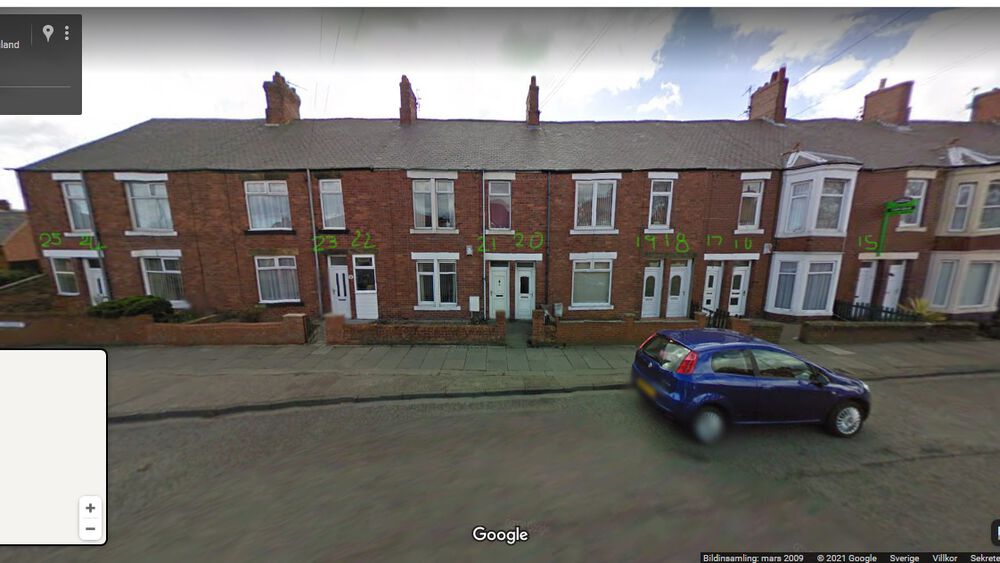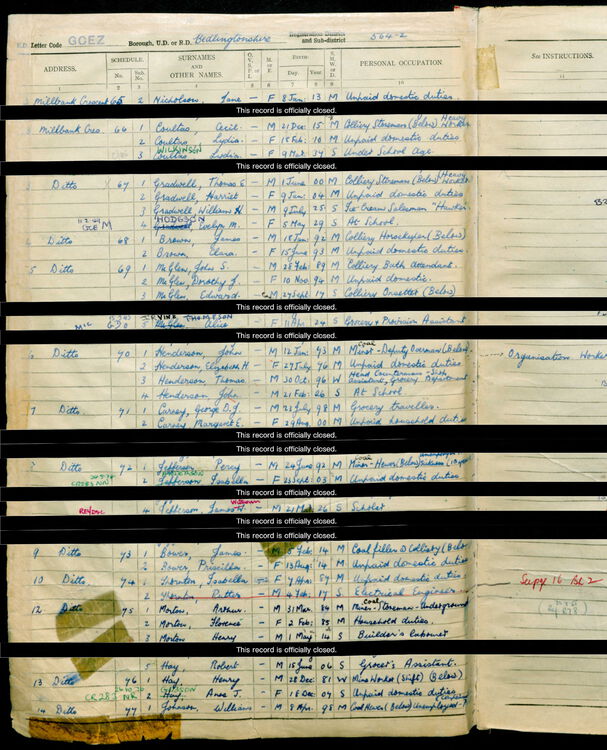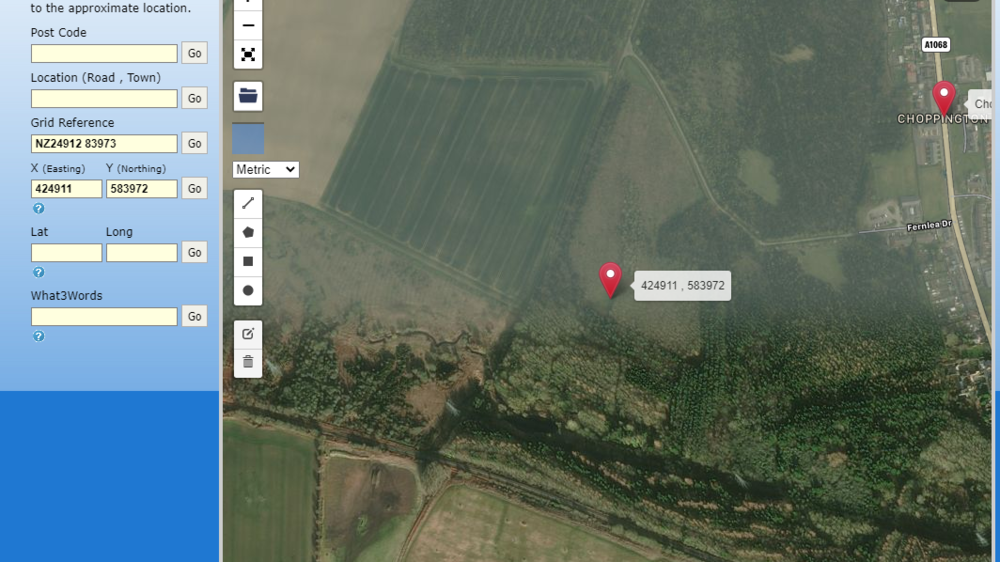.jpg.cdd7f8371d17e2f2f2e2a0e21e02f727.jpg)
Canny lass
Supporting Members-
Posts
3,610 -
Joined
-
Last visited
-
Days Won
416
Content Type
Forums
Gallery
Events
Shop
News
Audio Archive
Timeline
Everything posted by Canny lass
-
I don't, and I know canny lass doesn't (as she always checks her posts and edit's where necessary) I very rarely check anything. Most of my edits hinge around adding photos, maps etc. Editing after adding a photo to the text is the only way I've found of being able to continue writing after adding the photo. Sometimes I need to add a comment and then another photo so it involves quite a lot of editing.
-
That brings back memories! Beef Olives was the first thing I made in 'cookery classes' - or 'domestic science' as the teacher called it. I still make a version of it. There are no strange ingredients so you should be able to find what you need. I don't know if you can get your beef really thinly sliced, I can't but here's a tip: Buy a piece of beef, rather than sliced beef. Half freeze it (or half thaw it if it's already frozen) and then it's easy to cut extremely thin slices using a very sharp knife.
-
.thumb.jpg.7493ddab4a696108cf2b849323d3c155.jpg)
Netherton - Newcastle Weekly Chronicle 13 September 1873
Canny lass replied to Kevin1956's topic in History Hollow
PS. Yes typewriters did exist in 1873 - but only just, having been invented in the 1860's. -
.thumb.jpg.7493ddab4a696108cf2b849323d3c155.jpg)
Netherton - Newcastle Weekly Chronicle 13 September 1873
Canny lass replied to Kevin1956's topic in History Hollow
@lilbill15 I can vouch for the authenticity of this text. I’ve seen the original (National Archives). It is, as you suggest, a transcript of the original. This is evident in the transcriber’s use of the Latin “sic” indicating that he/she has quoted the text verbatim to include even the author’s non-standard language use. “and away to the south east firey (sic) heaps” (p8) “Away from the old pit is what is what (sic) is very appropriately” (p8) The article is one in a series, Our Colliery Villages, published in the Newcastle Weekly Chronicle 1872 onwards. There are a few transcripts floating about on the internet if you don't want to subscribe to the NA. -
Sorry if I mizzled you @lilbill15. I looked on Google Earth to see where Brook Court was and the result was shown as behind Hirst Terrace. Street View tells a different story!
-
There is no such thing as "doing something badly" Where I live, it's called "doing something differently".
-
-
@lilbill15 Just to round this off could you explain to me where "The Pantry" fits into this? Does it have some connection to nr. 25?
-
Good match but I'm pleased they lost. I couldnt be doing with another night of celebratory drinks in this heat.
-
That explains it! I was starting to think I might be going senile. Google maps and Google Earth use the same pics for the area, from March 2009. I usually concentrate on the more permanent features - lintels, chimneys, brickwork. They don't tend to change as often.
-
.thumb.jpg.7493ddab4a696108cf2b849323d3c155.jpg)
How's the weather in Alberta Vic?
Canny lass replied to Alan Edgar (Eggy1948)'s topic in Chat Central
I'll bet you'll be pleased when that rain comes, Vic! Grandson has 52 degrees in Mali at the minute. -
Change that pint to a whisky and I'd do the same.
-
Now I'm lost! Are there two nr 24 Millbank Crescent - one with a white door, as mentioned in your first post, and this one with a black door?
-
@Alan Edgar (Eggy1948) I don't know how you manage all this clarting! What a job getting those numbers in place!
-
At first sight I can agree with you, but if you look at how it was 1911 there are 25: Look at the double lintel across the door and small window of nr. 25. That's been 2 doors - same as all the other double lintels. Nr 15 is for sale (green notice on pole) but the number isn't too clear on a zoomed pic. Here's a closer pic of nrs. 17, 18 and 19 so that you can recognise the doors.
-
I don't know what happened there. I eddited my post and most of it disppeared when I posted! My theory is that after the first two houses mentioned above, Millbank Crescent consisted of flats. There are 25 dwellings on the census but there are not 25 houses - as the chimney's and bay windows suggest. Number 24 and 25 have been converted to one dwelling and if you count along to number 10 the same thing seems to have happened there with number 11. It seems that number 25 hasn't disappeared it's just beenj incorporated into number 24.
-
I think I have the answer to the disappearing 25. Looking at the 1939 register there is no number 11. I don't know why. Looking at the 1911 census, there are 25 dwellings on Millbank Crescent. The first of these (next to Millbank Terrace and working towards the station) has 8 rooms and is occupied by Mr. Garthwaite the headmaster at Bedlington's "Public Elementary School". The second dwelling has 6 rooms and is occupied by Mr Mayhew proprietor of a wholesale confectionary business. Today it looks like this: are Looking at Google Earth there are not 25 houses. Looking at 1911, the dwellings go in pairs of 3 roomed and 4 roomed. These must always have been flats: 4 rooms downstairs, 3 rooms upstairs. The chimney pots seem to verify that as well. Today, we can clearly see two doors per bay window for most of these dwellings - one for upstairs, one for downstairs. Number 24 only has one door. The two flats have been made into (or returned to the original) one house.
-
I spoke too soon! I've just looked at the 1911 census and Millbank Crescent had 25 houses. More info following.
-
@lilbill15 I had another look at the 1939 register. This time I looked at the whole street and found that there is no number eleven. There doesn't appear to have ever been a number 11 as the schedule numbers are consecutive and none are missing. Number 25 hasn't disappeared. It's more likely that number 12 has become number 11 and the higher numbers have been adjusted.
-
I'm sure they do but the only thing I'll be buying from UK is tax-free whisky on return journeys (assuming we ever get let out again). Brexit has meant that buying anything from Blighty involves a delivery time of months. Even a first class letter now takes 3-4 weeks instead of four days. I'm still waiting for a birthday present for a grandson - ordered May 7 in good time for a birthday 3 June. Last tracked June 15 at Heathrow Airport where it was said ti o be "in the post". Should this wonder cure you speak of eventually arrive here, despite all odds, it probably wouldn't be allowed in because it's a medication - and not many are approved by the authorities. I'll just have to plod on with my pillarless airy ellipsoid just as it is.
-
I'm sad to say it hasn't been the same since trig pillars went out of fashion.
-
Neither of the available options was what I'd want but now the PM has spoken to the nation. He chose to ask the speaker to relieve him of office. We now have an interim government - the same government with essentially the same powers - to fill the gap while the speaker has talks with all parties to try to form a government. He has four attempts to try to get parties to work together in a government before he must call an extra election. It took 4 months the last time! Sorry to be bombarding your birthday greetings with this Foxy. I'll stop now and wallow in a deep depression over the state of the nation. I'm sure the BBC will be keeping everybody in England informed. Over and out.
-
@lilbill15 I just checked it out by putting the numbers into a grid reference-finder: gridreferencefinder.com It came up with this: Just about spot-on for Puce Bush. Useful tool to have on your outings.
-
@lilbill15 I think I've cracked it! The numbers on your pic are a National Grid Reference. I'm not too familiar with it but here's a good site for basic info on using the grid: https://getoutside.ordnancesurvey.co.uk/guides/beginners-guide-to-grid-references
-
Big day tomorrow! The PM must reveal to the nation what his decision is: Will he resign or will he call for an extra election? We'll know tomorrow.



.thumb.png.1b254f427b7880163ffa0ff6e40e71d6.png)



.thumb.png.eefbb528dad68118483ae6d2b98b5828.png)

